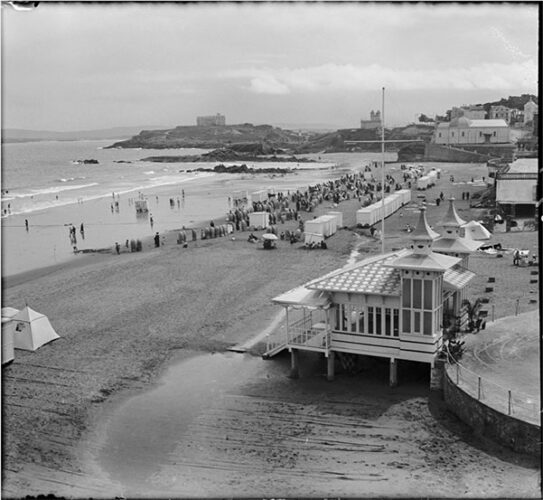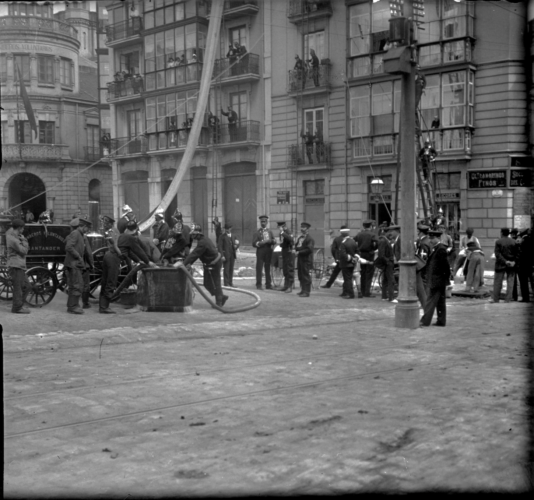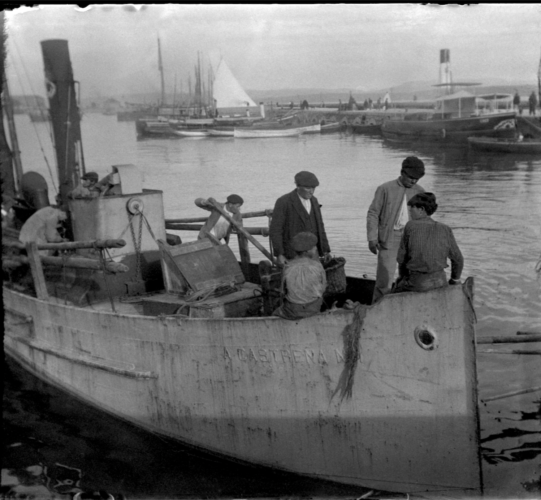EXPOSICIONES
Santander 1900 – 1920
Liborio Porset
28 jun. — 28 ago. 2025
Biblioteca Central de Cantabria. Sala Concepción Arenal
— Santander
Inauguración
27/6/2025
Comisariado por
Carlos González Ximénez
Organiza
Gobierno de Cantabria. Consejería de Cultura, Turismo y Deporte y PHotoESPAÑA
Horarios de la sede
Lunes a viernes
9:00–21:00
Sábado y domingo
11:00–20:00
Sede
Biblioteca Central de Cantabria. Sala Concepción Arenal
Ruiz de Alda, 19
Entrada
Mapa
En el último tercio del siglo XIX, la burguesía se aficionó a la fotografía, generando nuevos códigos visuales influenciados tanto por la estética del cinematógrafo y el incipiente fotoperiodismo como por la fotografía profesional. Los operadores aficionados recreaban, por medio de sus placas, la vida, los usos y costumbres instalados en la regencia de María Cristina y los primeros años del reinado de Alfonso XIII.
La fotografía estereoscópica, muy apreciada en la época, consistía en realizar una doble toma mediante una cámara provista de dos objetivos y un solo obturador, de forma que ambas lentes captaban a la vez cualquier imagen, impresionada por separado en dos espacios de la placa negativa. Una vez positivada y copiada en papel o cristal, la imagen debía contemplarse con unos visores especiales que producían en el espectador una impactante sensación de profundidad y tridimensionalidad. En definitiva, la estereoscopía es el ancestro del 3D.
Liborio C. Porset (Bilbao, c. 1850 – Madrid, c. 1920) fue un personaje curioso, poeta, corredor de seguros, dueño de una sastrería de renombre en la calle Sevilla de Madrid y estereoscopista aficionado. De clase acomodada, viajaba con frecuencia y veraneaba en Santander, ciudad que inmortalizó a través de cientos de placas tridimensionales inéditas en el primer cuarto del siglo XX.
Esta exposición presenta por primera vez una selección de fotografías realizadas por Porset en Santander, ciudad en la que probablemente veraneó a partir de 1912, al igual que muchos burgueses atraídos por la presencia de la familia real en el Palacio de la Magdalena. Las imágenes que se conservan ofrecen una visión privilegiada de la ciudad, previa al incendio que la arrasó en 1941.
In the last third of the nineteenth century, the bourgeoisie took up photography as a hobby and generated new visual codes influenced by cinematographic aesthetics, the burgeoning field of photojournalism, and professional photography. Hobbyists used their photographic plates to depict the life, customs, and mores that reigned in María Cristina’s regency and the early years of the reign of Alphonse XIII.
Stereoscopic photography, which was highly prized at the time, consisted of taking a double shot with a camera equipped with two lenses and a single shutter, such that both lenses captured the image at the same time and were then printed separately in two spaces on the negative. Once they were developed and copied onto paper or glass, the image had to be seen with special viewers that gave spectators an amazing sense of depth and three-dimensionality. Put briefly, stereoscopy is the ancestor of 3D.
Liborio C. Porset (Bilbao, c.1850–Madrid, c.1920) was a curious person, a poet, an insurance agent, the owner of a renowned tailor shop on Madrid’s Calle Sevilla, and a hobbyist stereoscopic photographer. Thanks to his wealth, he often travelled and summered in Santander, a city he immortalised through hundreds of three-dimensional plates that were never published in the first quarter of the twentieth century.
This exhibition presents for the first time a selection of photographs that Porset made in Santander, the city where he probably spent his summers after 1912, just like many other members of the bourgeoisie who were attracted by the presence of the royal family in Magdalena Palace. The images conserved afford a privileged glimpse into the city prior to the fire that razed it in 1941.






